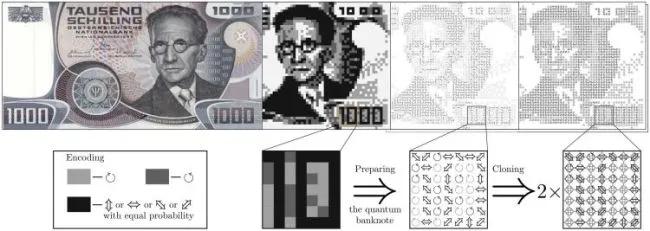Unknown quantum information cannot be perfectly copied (cloned). This statement is the bedrock of quantum technologies and quantum cryptography, including the seminal scheme of Wiesner’s quantum money, which was the first quantum-cryptographic proposal. Surprisingly, to our knowledge, quantum money has not been tested experimentally yet. Here, we experimentally revisit the Wiesner idea, assuming a banknote to be an image encoded in the polarization states of single photons. We demonstrate that it is possible to use quantum states to prepare a banknote that cannot be ideally copied without making the owner aware of only unauthorized actions. We provide the security conditions for quantum money by investigating the physically-achievable limits on the fidelity of 1-to-2 copying of arbitrary sequences of qubits. These results can be applied as a security measure in quantum digital right management.
